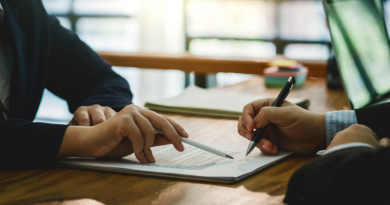What mistakes are you making on your VAT return?
What’s a gingerbread man with chocolate trousers got than a plain one hasn’t?
Now you may think this is a silly question, especially when this is about VAT. This is a question that you need to consider if you sell gingerbread men. The answer is 20% VAT, that’s right the plain gingerbread man isn’t considered a luxury item so is zero-rated whereas his more exotic cousin with chocolate trousers is vatable.
With the complexity of the VAT laws, it’s understandable that businesses make mistakes on their VAT returns. When VAT was first introduced in the UK way back in 1973, it was hailed as a simple tax. Turns out it isn’t quite so simple after all. So, what are the most common mistakes small businesses make with VAT?
Firstly, let’s look at the three most common VAT schemes businesses use:
- Accrual VAT VAT is paid on sales regardless of whether your customers have paid you, you then reclaim VAT from your suppliers’ invoices, whether you have paid the bill or not.
- Cash Accounting VAT based on the money you’ve received and paid, so you are not paying the VAT on sales invoices until you have received the money.
- Flat Rate Scheme. You raise your invoices and charge your customers at the appropriate rate of VAT, but you simply pay over a reduced percentage, which depends on your industry sector, to HMRC. Importantly with the flat rate scheme you’re unable to reclaim any VAT on your expenses except on some capital equipment.
The first mistake is not comparing VAT schemes, on the face of it, the flat rate scheme delivers cashflow savings and it does simplify your accounting to some extent. However, a costly mistake is not comparing this scheme to the Cash Accounting VAT Scheme. Where a business has a fair chunk of expenses it pays VAT on, it might not be tax efficient to join the flat rate Scheme.
And where a business has some exempt income (rental income), extra care needs to be taken when joining the flat rate Scheme because you end up having to pay VAT on income that’s normally exempt.
Common mistakes made with the flat rate scheme.
- Using the wrong flat rate percentage
This is an area where small businesses can easily be caught out because of the “limited cost trader” VAT rule. This rule will essentially increase the flat rate percentage for most service-based businesses. So take extra care and ensure that your flat rate percentage is reviewed to avoid triggering a VAT enquiry and having to pay back-dated VAT.
- Under-stating the flat rate turnover
Normally when an income is exempt from VAT, it means just that. Exempt. You do not include it on your return.
But here is one of the quirks of the Flat Rate Scheme. The gross income you enter in Box 6 of the VAT return should also include the value of all exempt and zero-rated supplies.
So, in some cases, you may end up paying more VAT under the Flat Rate Scheme.
- Using the 1% reduction beyond its expiration date
When you first join this scheme, you get a 1% reduction off your industry percentage for the first year only. The reduction expires on the anniversary of your VAT registration and NOT the anniversary of you joining the scheme.
Take extra care with this common mistake as this will result in payment of backdated VAT.
Mistakes often seen on VAT returns
- No satisfactory evidence for VAT reclaims
When it comes to claiming back VAT, the general rule is simple if you don’t have a VAT receipt, you cannot reclaim the VAT, whilst there are few exceptions to this rule, why take the risk? And where you have a VAT receipt, make sure the item bought does carry VAT.
- Claiming back VAT on business entertainment
Although entertaining clients is justifiable to win contracts, VAT on these expenses is normally blocked and cannot be claimed back. There’s a simple solution to avoid mistakes in this area, when setting up your bookkeeping software have a separate category for business entertainment with nil VAT and ensure your bookkeeper knows when any receipts should be allocated here.
- Not claiming VAT on staff entertainment
Here’s one exception to the rule that VAT cannot be claimed on entertainment. Where you entertain staff, including directors of their own company, ensure you claim back the VAT on the expenditure, assuming expense carries VAT. Just one of the many quirks in the VAT rules a bit like the gingerbread man scenario.
- Not adding the human element to the automation
All modern bookkeeping software has an element of automation that saves time on data entry, which is great, however before you file your return you should look through the summary to ensure everything is correct. Having used cloud software since 2014, I must dismiss the myth that the computer will do it all for you.
There are many TV adverts claiming to have a VAT checker built in the danger is companies rely on this and fail to carry out basic checks on the VAT return before filing. Errors such as automatically coding expenses to wrong account and duplicated bank transactions are really common and lead to costly VAT enquiries. One of the most common mistakes I have come across here occurs when the actual invoices as well as the statements or pro-forma invoices are uploaded to the software and the VAT is then claimed twice, the software will not recognize this as a duplicate as the pro-forma will usually have a different number to the invoice.
- Not accounting for VAT on services received from overseas suppliers
The reverse charge, in simple terms is where a UK business buys services from an overseas supplier in the EU, the UK business is required to account for VAT on those services on their VAT return, as if they were the supplier.
Under the reverse charge rules output VAT, which is the VAT on income, must be declared in Box 1 of the VAT Return. This VAT, subject to the normal rules, is also recovered as input VAT, which is VAT on expenses, in Box 4. The overall effect is nil, If you’re thinking what is the point in that you are not alone, but rules are rules!
- Failing to repay VAT on supplier invoices
When using accrual scheme for your VAT returns and VAT has been recovered on purchases from a supplier, if you do not pay this supplier within six months, you’re required to repay any VAT recovered to HMRC.
Similarly, where a customer hasn’t paid you for over six months and you’ve already paid VAT on that invoice, you can claim it back. This is something to watch out when reviewing your return before filing, I’ve not come across any software yet that checks this for you.
This oh so simple and straightforward tax can be anything but so if you’re unsure seek professional advice especially when it comes to complex VAT issues. If you decide to go it alone my advice is to take extra care, use a checklist and don’t assume the software will always get it right.
Originally posted 2022-07-05 11:11:47.
- Are you tax aware? - December 25, 2025
- Domestic Reverse Charge – say what now? - November 6, 2025
- Why should you have a bookkeeper? - July 22, 2025






